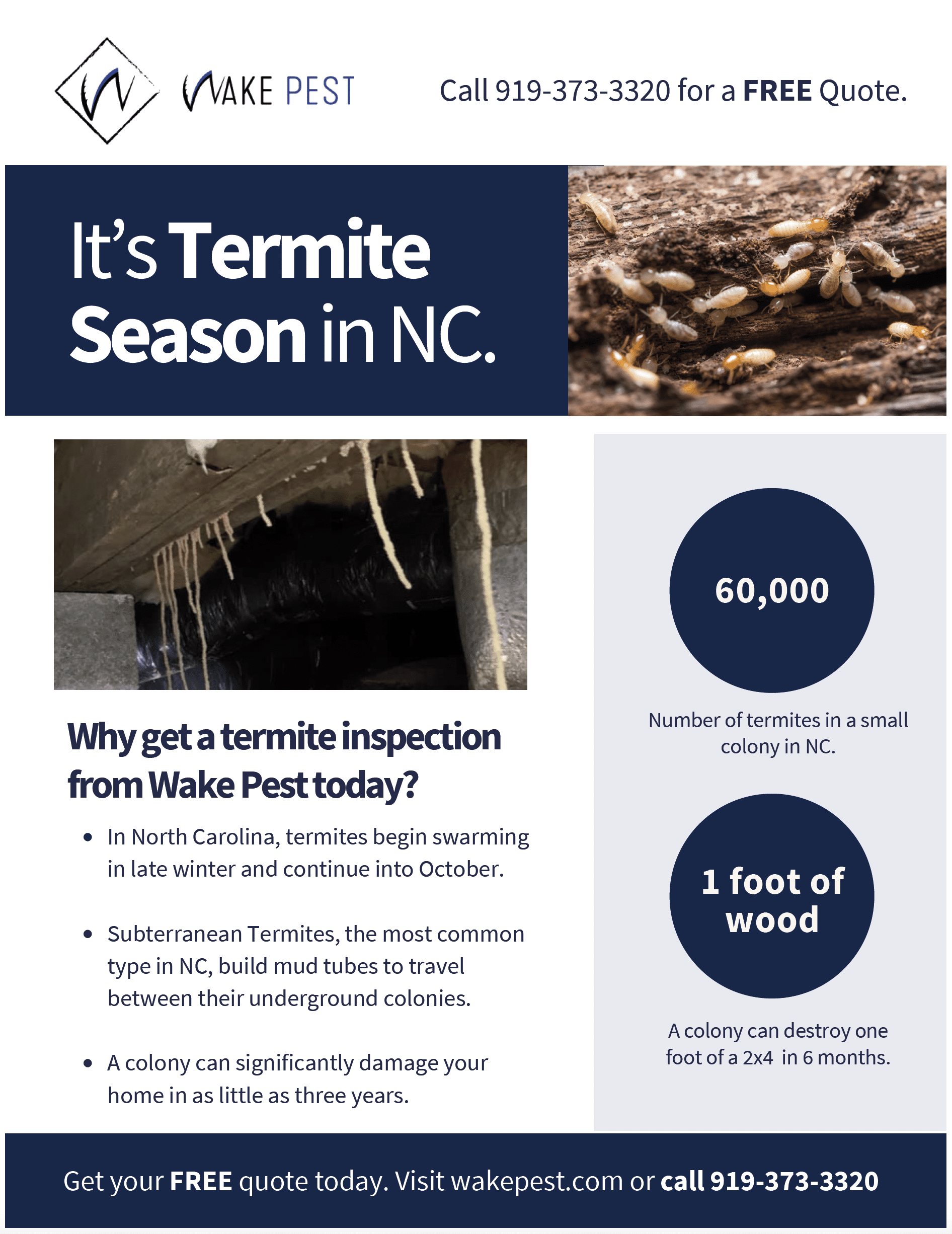Termites might be tiny, but their impact on your home can be colossal. Often called “silent destroyers,” these pests chew through wood, flooring, and wallpaper, causing structural damage before many homeowners realize there’s a problem. When you notice the signs of an infestation, termites may have already caused significant damage, leading to costly repairs that could have been prevented.
The importance of regular termite inspections cannot be overstated. A professional inspection helps to detect signs of termite activity and prevent potential devastation to your property.
Signs of Termite Infestation
Identifying a termite infestation early can save homeowners from substantial repair costs and structural damage. Termites are discreet, often causing havoc without immediate signs, so understanding what to look for is crucial. Here are some of the most common indicators that termites may have taken residence in your home.
One of the most recognizable signs is the presence of mud tubes. These pencil-sized tunnels are typically found near your home’s foundation and serve as a protective highway for termites from the soil to their food source. These structures are made from tiny particles of soil, wood, and debris and help maintain the colony’s moisture needs.
Another alarming sign is damaged wood. Termites consume wood from the inside out, often leaving a thin veneer to mask their activity. Over time, this can lead to visibly sunken or rippled appearances in wooden structures, and the wood may sound hollow when tapped. This damage is only sometimes visible on the surface; sometimes, the only hint is the wood sounding unusually hollow.
Homeowners might also notice discarded wings. Reproductive termites, or swarmers, leave the nest to start new colonies and shed their wings after finding a mate. Finding discarded wings near windowsills and doors can be the first indication of an indoor colony.
The Role of Professional Termite Inspections
Termite inspections are a critical component of home maintenance, serving as a proactive measure to detect and manage potential infestations before they result in significant damage. Unlike do-it-yourself evaluations, professional termite inspections bring a level of thoroughness and expertise that is essential for effective pest management.
Professionals with specialized tools and extensive knowledge can identify the sometimes subtle signs of termite activity. For example, they utilize moisture meters to detect high humidity within walls—a common indicator of termite presence. Infrared cameras can also play a role, revealing heat patterns caused by termite activity that would otherwise go unnoticed by the unaided eye.
Beyond the use of advanced technology, professionals bring an understanding of termite behavior and risks associated with different types of buildings and materials. They know where termites are most likely to enter, what conditions invite termite activity, and how to interpret signs that might be ambiguous to the untrained observer.
During a professional inspection, the inspector carefully examines potential entry points and high-risk areas such as basements, attics, exterior foundations, and crawlspaces. This comprehensive approach ensures that every corner is noticed, and if termites are found, the inspector can assess the extent of the infestation and the potential damage.
Moreover, a professional’s work continues beyond detection. They provide detailed reports that explain their findings, offer guidance on necessary treatments, and suggest preventive measures to protect the property in the future. This information is invaluable for maintaining your home’s structural integrity and value.
Post-Inspection: Treatment and Prevention
After a professional termite inspection, the next steps involve treating current infestations and implementing strategies to prevent future problems. Understanding these measures can help homeowners maintain the integrity of their property and avoid the extensive damage that termites can cause.
Treatment Options
If the inspection report confirms the presence of termites, treatment must begin promptly to minimize damage. The specific approach can vary depending on the type of termite, the extent of the infestation, and the location of your home.
One common treatment method involves using termiticides and pesticides designed specifically for termites. These can be applied in liquid form to create a barrier in the soil around a home, preventing termites from accessing the wood structures. Once consumed, the bait disrupts the normal growth of termites, eventually eliminating the colony.
For structures already heavily infested, more direct treatments might be necessary. Foam termiticides can be injected into wall cavities and other infested spaces to target the termites where they live.
Preventive Measures
Beyond immediate treatment, ongoing prevention is critical to keeping your home termite-free. This involves physical and behavioral changes to make your property less attractive to termites.
Maintaining a dry environment is crucial, as termites thrive in moisture-rich areas. Fix leaks promptly, ensure good drainage around the foundation, and use dehumidifiers in crawl spaces and basements if necessary.
Eliminating wood-to-soil contact can also reduce termite attraction. Wood siding, door frames, and similar structures should be at least six inches above the ground, and any landscape mulch should be kept away from the foundation.
Regular inspections form another key part of prevention, especially in regions prone to termite activity. Even if no termites were found during the initial inspection, scheduling regular follow-ups can catch new activity before it becomes a significant problem.
Homeowner Responsibilities
As a homeowner, staying vigilant is your best defense against termites. Monitor your home regularly for signs of termites, such as mud tubes or hollow-sounding wood, and maintain the property to deter termite activity. Following the inspector’s recommendations for treatment and prevention will help ensure that your home remains safe and structurally sound.
Finding a Reliable Termite Inspector
Selecting a qualified and reliable termite inspector is crucial to protecting your home from termite damage. The integrity and safety of your property depend on the expertise of the professional you choose. Here’s how you can ensure you find a reputable inspector.
Start with Credentials
When searching for a termite inspector, first verify their credentials. The state pest control board should license a reputable inspector. This licensing ensures they have met certain education standards and adhere to professional conduct. Additionally, check if they are affiliated with professional associations, such as the National Pest Management Association (NPMA), which often provides ongoing training and updates on industry standards and practices.
Experience Matters
Experience in termite inspection plays a critical role in effectively identifying and treating termite issues. Look for a company or individual with extensive termite experience instead of general pest control. Experienced inspectors are more likely to detect subtle signs of infestation and understand the specific treatments needed for different termite issues.
Ask for References and Reviews
Before hiring an inspector, ask for references and check online reviews. Speaking to past clients can provide insight into the inspector’s thoroughness, reliability, and customer service. While online reviews should be taken with a grain of salt, they can highlight any recurring issues or strengths.
Detailed Inspection and Clear Communication
A good inspector performs a thorough inspection and communicates clearly about their findings and recommendations. During your initial consultation, observe how the inspector explains their process. They should be willing to discuss what the inspection will cover and how they report their findings. After the inspection, they should provide a detailed report explaining your home’s condition, any signs of termite activity, and preventive measures.
Consider the Cost
While cost should not be the sole factor in choosing an inspector, it’s important to consider. Be wary of unusually low prices, as this might indicate a lack of thoroughness or hidden fees. Similarly, very high prices do not necessarily guarantee superior service. Get quotes from several inspectors to find a reasonable range and understand what services are included in the price.
Conclusion
Termite inspections are not just a routine part of home maintenance; they are a crucial investment in the longevity and safety of your property. Throughout this article, we have explored the silent but significant threat that termites pose to homes, the signs of infestation to watch for, and the comprehensive process involved in professional inspections. We’ve also discussed the importance of prompt and effective treatment, along with ongoing preventive measures, to ensure that termites do not compromise the structural integrity of your home.
Remember, the cost of an inspection is minimal compared to the expense of repairing extensive termite damage. Regular checks and early detection are key to maintaining a stable home. Don’t wait for visible signs of damage; schedule regular termite inspections and ensure your home remains a safe and valuable asset for years.


